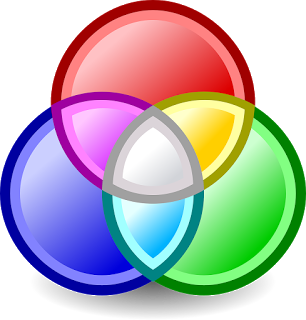To Celebrate 2700th Blog Posting: The Multitude of Creative Leadership
 Digital is the age of innovation. Creativity matters more than ever because businesses and the world today become over-complex with accelerated changes. The more "creative leaders," we have, the better for the world. Creative leadership is the unique combination of leadership mindset and behaviors that are futuristic and forward thinking, develops and achieves high quality and meaningful results over a sustained period of time. By etymology, "innovare" signifies "to germinate seeds," knowing that, go ahead and innovate by inventing your future, and the one of your company’s. Creative leadership can be described as "Adaptability meets Agility.” Creativity has many faces, and creative leadership is multitude to manage innovation in an effective way.
Digital is the age of innovation. Creativity matters more than ever because businesses and the world today become over-complex with accelerated changes. The more "creative leaders," we have, the better for the world. Creative leadership is the unique combination of leadership mindset and behaviors that are futuristic and forward thinking, develops and achieves high quality and meaningful results over a sustained period of time. By etymology, "innovare" signifies "to germinate seeds," knowing that, go ahead and innovate by inventing your future, and the one of your company’s. Creative leadership can be described as "Adaptability meets Agility.” Creativity has many faces, and creative leadership is multitude to manage innovation in an effective way.
Innovation Paradox: Business innovation often has the characteristic of paradox. The paradox is “a situation, person, or thing that combines contradictory features or qualities.” For example, in business, complexity both drives innovation and also hinders it. When a business becomes overly complex and people get frustrated and annoyed by not being able to accomplish things easily, this drives the search for simpler concepts and methods, which is the need to take the innovative initiative. Also, over-complexity in a business may be hiding simple and innovative ways to achieve things because the people involved just don't get the time to step back from the complexity and hence, they continue to follow the old routine to do the things, lack of the out of box creativity. The paradox is the result of two opposing truths existing side by side, which can be both right. From business perspective, on one side, overly focus on efficiency could limit the creativity potential of the business due to the limited resources invested on innovation, but improving business efficiency is always one of an important aspect to improve business maturity. Hence, efficiency and innovation just have to learn to live and function together. The greater the efficiency of an organization, the greater the need is for creativity to maintain high performance in the long run. Efficiency will extract the maximum benefit from a new idea. If an organization is inefficient, it will be inefficient with new ideas as well. Many process innovations will be concerned with increasing and optimizing efficiency and maintaining existing skills and linkages. Same as the standardization vs creativity, standardization is inside-the-box, and innovation is outside-the-box. Hence, organizations indeed need both, and in fact, cannot realistically exist without a healthy leverage of both.
Innovation balance: An innovative leader must walk the tightrope between diplomat and maverick: There are multitude of factors to spark creativity. On one hand, he/she will get faster results by respecting people, getting the best effort from the people. Listening and orchestrating as fast as possible. On the other hand, to deliver the innovation on time, he/she must be willing to take risks, and jump through some hoops. Knowing that success will reward and failure will punish. You cannot make omelets without breaking some eggs.Walking that tightrope makes the innovation leader a likable acrobat; a true artist; in short, an innovation leader with the right balance. Innovation is about thinking differently, acting differently, delivering differently, adding value differently from the status quo. Therefore, it’s also important to build an innovative team with the right balance of skills, experience, cultural heritage, ability to analyze/self-reflect, sensitivity to social judgment/ridicule, habituation, courage, strategic thinking, etc. Though creativity needs a type of free thinking, creativity with limited resources and a specific goal seems to need the use of more methodical techniques for releasing it, a more rigorous methodology may be demanded by creative environments that need to deliver consistent, frequent results under pressure and manage innovation in a balanced and structural way.
 Innovation Fit: Creativity also needs to “fit for the purpose.” Develop the tailored best and next practice to stimulate and scale innovation. Looking uphill can help to identify the real problems that matter, and on a scale that can make a difference. Looking deeply into the future can have a profound effect on where we go, and how we get there. Innovation is a management process, not just a serendipitous magic. More and more firms are learning and implementing best practices in innovation, Originally, all best practices were industry specific and evidence-based, meaning they were based on data. And practice is always a combination of both people and processes- how they are used to doing things in the organization. But at today’s digital hyperconnectivity, more often businesses have to discover creative solutions across industrial border. From innovation management perspective, obviously, there are organizations that are better at "ambidexterity" and those that are worse. It requires acknowledgment, involvement, and commitment. It also needs to have principles, processes and performance measurement. Many like P-I-N approach to start handling new ideas:* P - what is positive about the idea* I - what is innovative about the idea* N - what are the negatives, problems, risks
Innovation Fit: Creativity also needs to “fit for the purpose.” Develop the tailored best and next practice to stimulate and scale innovation. Looking uphill can help to identify the real problems that matter, and on a scale that can make a difference. Looking deeply into the future can have a profound effect on where we go, and how we get there. Innovation is a management process, not just a serendipitous magic. More and more firms are learning and implementing best practices in innovation, Originally, all best practices were industry specific and evidence-based, meaning they were based on data. And practice is always a combination of both people and processes- how they are used to doing things in the organization. But at today’s digital hyperconnectivity, more often businesses have to discover creative solutions across industrial border. From innovation management perspective, obviously, there are organizations that are better at "ambidexterity" and those that are worse. It requires acknowledgment, involvement, and commitment. It also needs to have principles, processes and performance measurement. Many like P-I-N approach to start handling new ideas:* P - what is positive about the idea* I - what is innovative about the idea* N - what are the negatives, problems, risksCreative leadership is in demand. Digital innovation has a broader spectrum with hybrid nature, it has the hybrid combination of something old and something new, and it is the incremental improvement- radical innovation continuumFollow us at: @Pearl_Zhu
Published on April 09, 2016 23:24
No comments have been added yet.



